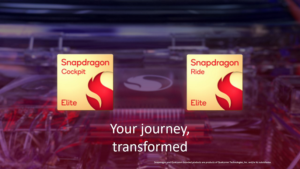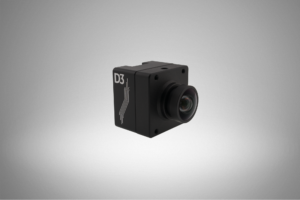Automotive Applications for Embedded Vision
Vision products in automotive applications can make us better and safer drivers
Vision products in automotive applications can serve to enhance the driving experience by making us better and safer drivers through both driver and road monitoring.
Driver monitoring applications use computer vision to ensure that driver remains alert and awake while operating the vehicle. These systems can monitor head movement and body language for indications that the driver is drowsy, thus posing a threat to others on the road. They can also monitor for driver distraction behaviors such as texting, eating, etc., responding with a friendly reminder that encourages the driver to focus on the road instead.
In addition to monitoring activities occurring inside the vehicle, exterior applications such as lane departure warning systems can use video with lane detection algorithms to recognize the lane markings and road edges and estimate the position of the car within the lane. The driver can then be warned in cases of unintentional lane departure. Solutions exist to read roadside warning signs and to alert the driver if they are not heeded, as well as for collision mitigation, blind spot detection, park and reverse assist, self-parking vehicles and event-data recording.
Eventually, this technology will to lead cars with self-driving capability; Google, for example, is already testing prototypes. However many automotive industry experts believe that the goal of vision in vehicles is not so much to eliminate the driving experience but to just to make it safer, at least in the near term.

MIPI Alliance Releases Camera Security Specifications for Flexible End-to-end Protection of Automotive Image Sensor Data
MIPI Camera Security Framework delivers application-layer security services for end-to-end data protection and configurable security levels based on application requirements BRIDGEWATER, N.J., October 29, 2024—The MIPI Alliance, an international organization that develops interface specifications for mobile and mobile-influenced industries, today announced the release of the MIPI Camera Security Framework, which defines a flexible approach to

Optimizing the CV Pipeline in Automotive Vehicle Development Using the PVA Engine
This blog post was originally published at NVIDIA’s website. It is reprinted here with the permission of NVIDIA. In the field of automotive vehicle software development, more large-scale AI models are being integrated into autonomous vehicles. The models range from vision AI models to end-to-end AI models for autonomous driving. Now the demand for computing

Qualcomm Announces Multi-year Strategic Collaboration with Google to Deliver Generative AI Digital Cockpit Solutions
Highlights: Qualcomm and Google will leverage Snapdragon Digital Chassis and Google’s in-vehicle technologies to produce a standardized reference framework for development of generative AI-enabled digital cockpits and software-defined vehicles (SDV). Qualcomm to lead go-to-market efforts for scaling and customization of joint solution with the broader automotive ecosystem. Companies’ collaboration demonstrates power of co-innovation, empowering automakers

Qualcomm Races Ahead in the Evolution of Software-defined Vehicles with New Snapdragon Cockpit Elite and Snapdragon Ride Elite Platforms
Highlights: Li Auto and Mercedes-Benz AG select Snapdragon Elite tier automotive platforms for their future commercialized vehicles. New Snapdragon Cockpit Elite and Snapdragon Ride Elite platforms debut with Qualcomm Oryon CPU, now tailored for automotive. Platforms are targeting 3x faster CPU and up to 12x stronger AI performance* for in-vehicle experiences compared to previous flagship

2023 Milestone: More than 760,000 LiDAR Systems in Passenger Cars. Which Technology Leads the Market?
This market research report was originally published at the Yole Group’s website. It is reprinted here with the permission of the Yole Group. Hesai, Seyond, RoboSense, and Valeo: Yole Group’s analysts invite you to dive deep into leading LiDAR tech. OUTLINE: LiDAR can achieve an angular resolution of 0.05°, offering more precise object detection and

“Removing Weather-related Image Degradation at the Edge,” a Presentation from Rivian
Ramit Pahwa, Machine Learning Scientist at Rivian, presents the “Removing Weather-related Image Degradation at the Edge” tutorial at the May 2024 Embedded Vision Summit. For machines that operate outdoors—such as autonomous cars and trucks—image quality degradation due to weather conditions presents a significant challenge. For example, snow, rainfall and raindrops… “Removing Weather-related Image Degradation at

D3 Embedded Introduces Camera Modules Based on Valens Semiconductor’s VA7000 MIPI A-PHY Chipsets
The integration of MIPI A-PHY into DesignCore® Series Cameras will accelerate time-to-market for customers developing performance-critical products for robotics, industrial vehicles, and other embedded vision applications. Rochester, NY – October 8th, 2024 – D3 Embedded, a global leader in embedded vision systems design and manufacturing, today announced that it has partnered with Valens Semiconductor, a

MIPI Alliance Announces OEM, Expanded Ecosystem Support for MIPI A-PHY Automotive SerDes Specification
Global OEMs and other supply chain vendors embrace A-PHY to support next-generation ADAS and ADS applications BRIDGEWATER, N.J., October 9, 2024 – The MIPI Alliance, an international organization that develops interface specifications for mobile and mobile-influenced industries, today announced global OEMs and other automotive supply chain vendors have joined the growing ecosystem that is designing

Nextchip Demonstration of a UHD Camera Reference Design Based On Its APACHE_U ISP
Barry Fitzgerald, local representative for Nextchip, demonstrates the company’s latest edge AI and vision technologies and products at the September 2024 Edge AI and Vision Alliance Forum. Specifically, Fitzgerald demonstrates a UHD camera reference design based on the company’s APACHE_U ISP in conjunction with an 8 Mpixel image sensor from fellow Alliance Member company Samsung.

MIPI Alliance Releases A-PHY v2.0, Doubling Maximum Data Rate of Automotive SerDes Interface to Enable Emerging Vehicle Architectures
Industry-leading specification simplifies the integration of image sensors and displays to support next-generation ADAS and ADS applications BRIDGEWATER, N.J., Sept. 26, 2024 — The MIPI Alliance, an international organization that develops interface specifications for mobile and mobile-influenced industries, today announced the release of MIPI A-PHY v2.0, the next version of the automotive high-speed asymmetric serializer-deserializer

